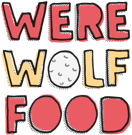Meat Content vs. Protein: What Do Dog Food Labels Really Mean?
Ever glanced at the back of a dog food bag and noticed both “meat content” and “crude protein” percentages, and wondered what they actually mean? You’re not alone! Let’s dive into the details and explain what these numbers really reveal about the quality of your dog’s food.
Meat Content: More Than Just Protein
When we talk about meat content, we’re referring to the actual percentage of meat in the recipe. While meat is a primary source of protein, it’s not pure protein. It also contains water, fats, vitamins, and minerals, which are essential but aren’t counted as digestible protein. So, the percentage of meat in a recipe should always be higher than the protein percentage.
For example, our Adult Chicken Recipe features 55% meat content, while some supermarket brands might have as low as 4%. But don’t just look at the percentage—what’s more important is the quality of the meat. We use human-grade, fresh meat and fish, cooked gently to preserve the nutrients.
Be cautious of dog foods with vague terms like “meat and animal derivatives” or “meat and bone meal.” Also, check for formulas where cereals or grains make up a higher percentage than the meat itself. This can often signal a lower quality product which uses cheap fillers.
Protein: It’s About Quality, Not Just Quantity
Protein content is calculated based on the nitrogen in the food, which comes not only from meat but also from other sources like beans, grains, and vegetables. For instance, our Adult Chicken Recipe contains 26% crude protein.
Here’s the key: protein content isn’t a direct reflection of the quality of the meat or fish. It’s about the source and quality of the protein. So, instead of focusing on protein percentage, focus on the quality of the ingredients. To ensure you’re getting good-quality protein, check the label for:
- Whole meat or fish listed as the first ingredient
- High-quality ingredients, like fruits and vegetables, which are a good sign that the food doesn’t rely on fillers like grains and cereals
- The word “complete” on the label, meaning the food contains all the nutrients your dog needs to stay healthy
Need Help? We’re Here for You!
We get it—navigating dog food labels can feel like decoding a puzzle. If you ever need more information or have specific concerns, we’re here to offer guidance. Please don’t hesitate to reach out.
It’s not about the numbers—it’s about the quality and source of ingredients. Trust your knowledge and make informed choices for your dog’s well-being.

